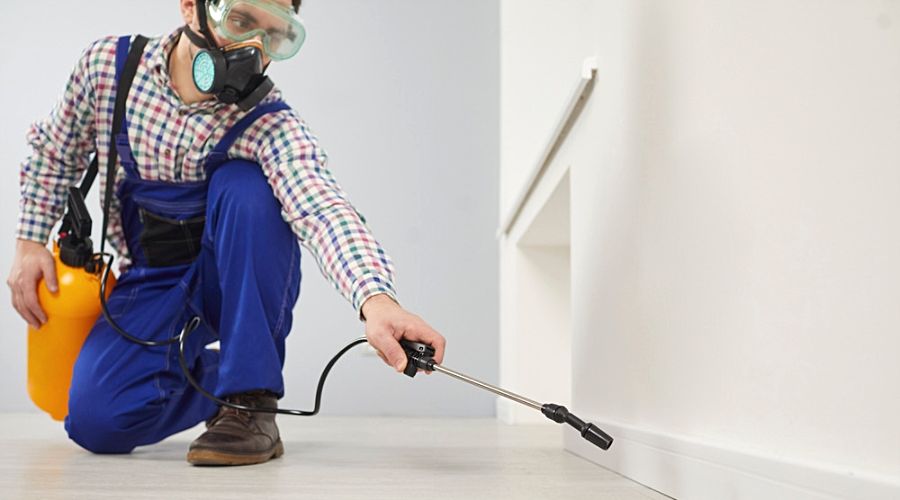Termites are silent destroyers that can cause irreparable damage to residential and commercial buildings. According to entomologists at Texas A&M, they cause more than $2 billion of damage annually. The pests go undetected for long periods, only spotted when the damage is done.
Understanding the life cycle of termites can help identify when they are near your home or building. The life cycle includes the egg, larvae, nymph, soldier, and worker. Termites also have kings and queens and swarmers or alate.
Identifying Termite Swarms
When the weather gets warmer, swarmer termites leave the colony to form a new one. Swarmer termites have four equal-sized wings, a broad waist, and stiff antennae.
These winged termites often come from outside nests, usually near trees or landscaping. If you spot a termite swarm near your home, they may be preparing to colonize the wood in your home.
Swarmer or alate termites shed their wings when they have successfully mated and colonized a new location. You may notice wings near windows as the swarmers move toward the light to find a food source.
What Is Swarming Season?

When a termite colony has reached capacity, swarmers colonize new areas. Swarming season typically takes place as the weather gets warmer. Swarmer termites launch into the air and pair off to mate. Once they mate, the alate termites shed their wings and search for a place to colonize.
When Do Termites Swarm in San Antonio
There are three termite types: Subterranean termites, Formosan termites, and Drywood termites. The Subterranean termites swarm between February and April. The Formosans swarm in May, and the Drywood termites swarm in the late spring and early summer.
Termite Prevention 101: Do’s and Don’ts
Preventing termites is the best way to fight infestations. Texas is in a moderate to heavy termite infestation zone, but you can take several steps to keep them from invading your home.
Do’s:
- Before and during swarming season, keep trees and bushes trimmed away from your home.
- Repair or replace any structural damage from water, rot, or decay.
- Termites need water, so fix broken gutters and channel water away from foundations.
Don’ts:
- Do not stack wood or landscaping debris near your homes or yards.
- Landscaping should not include wood-based mulch near home foundations.
- Termites like standing water, so it’s important to prevent moisture from accumulating in or around your home.
- Exterior soil should not touch your home’s structural wood.
Professional Termite Extermination & Treatment

While preventative steps can keep termites from infesting your home, the only way to keep them out of your San Antonio home is with professional termite control. The experts at Romney Pest Control are skilled in dealing with all pest problems.
Our pest control experts can inspect and identify pests in Bexar County and surrounding counties to apply the proper treatment methods to prevent future infestation. Call us now for a free quote!




